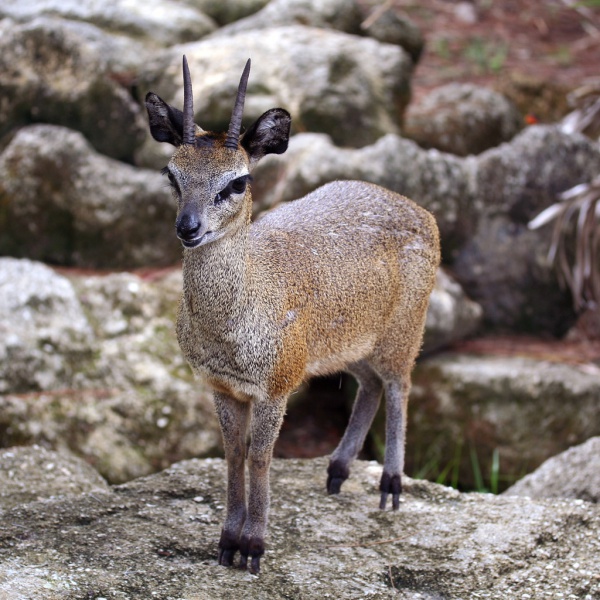Facts About Klipspringer
The klipspringer is a small yet captivating antelope species that inhabits the rocky terrains of eastern and southern Africa. This unique animal was first identified by German zoologist Eberhard August Wilhelm von Zimmermann in 1783. Klipspringers are recognized for their compact and robust build, standing approximately 43–60 centimeters tall at the shoulder and weighing between 8 to 18 kilograms. Their coats, which vary from yellowish-gray to reddish-brown, offer excellent camouflage against their rocky surroundings. They also feature short, sharp horns measuring around 7.5–9 centimeters.
Klipspringers are primarily nocturnal, choosing to rest during the heat of the day and the late hours of the night. They lead a distinctive lifestyle, often forming lifelong monogamous pairs and remaining close to their partners. These antelopes flourish in rocky terrains with sparse vegetation and are widely distributed across Africa. Fortunately, they are classified as "Least Concern" by the IUCN, indicating that there are no significant threats to their survival. While they are sometimes hunted for their meat, leather, and hair, the challenging accessibility of their habitat helps maintain their populations.
Breeding among klipspringers is seasonal. After a gestation period of about six months, a single calf is born. This calf stays with its mother for up to a year before venturing out on its own. Klipspringers exhibit remarkable adaptations: they possess a thick coat with hollow, brittle hairs, and they can walk on the tips of their cylindrical hooves. Their diet primarily consists of young plants, fruits, and flowers, with grass constituting a minor component.
These antelopes can be found from northeastern Sudan to South Africa, including the coastal regions of Angola and Namibia. They thrive in protected areas and private farmland, with significant populations in various national parks across the continent.

 Eswatini (Swaziland)
Eswatini (Swaziland)